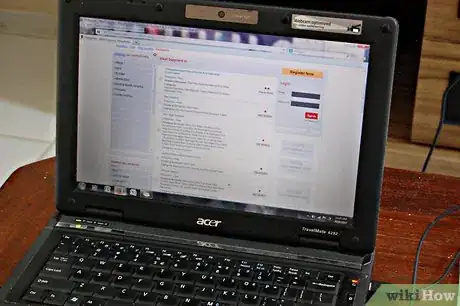X
wikiHow is a “wiki,” similar to Wikipedia, which means that many of our articles are co-written by multiple authors. To create this article, volunteer authors worked to edit and improve it over time.
This article has been viewed 35,597 times.
Learn more...
There are many opportunities in the food industry. Sandwiches have remained a viable food product on menus everywhere, and good sandwich makers always seem to be in demand. If you have a penchant for making appetizing sandwiches, and you're ready to sell sandwiches commercially, consider these tips.
Steps
-
1Determine the location to sell your sandwiches. The easiest way to keep your startup costs lower and reach consumers directly is to sell your sandwiches through an existing vendor. Contact cafes, street vendors, and convenient stores in busy areas and offer samples of your sandwiches to the owners or managers.
- Negotiate a pricing system that will be profitable for you and the vendor. Discuss terms of payment and other details such as quantities to be expected and delivery times.
- The health department requires a commissary to sell sandwiches commercially. A commissary is a location to prepare and store food. This could be in the agreement with your vendor, or with another store or restaurant.
-
2Secure proper documentation. Visit the health department for information on necessary licenses, certificates, or permits. Contact the appropriate authorities for directions on filing any particular taxes. It's a good idea to open a separate bank account for business transactions, even starting small. This will help you keep track of expenses and deductions while becoming a sandwich maker.
- Keep account of cash flow with paper receipts, ledgers, and accounting software. To concentrate on becoming a better sandwich maker, you might plan to hire a bookkeeper as well.
Advertisement -
3Purchase or rent kitchen equipment. You will need a refrigerator, a meat slicer (or quality knife), and a scale to weigh meat and other ingredients. If you bake your own bread, you'll also need a commercial oven or bread-maker. Install the equipment at the commissary, and be sure to have convenient access.
- You'll need to obtain appropriate-sized containers to keep meat and vegetables fresh. Shelving and kitchen attire may also be necessary. And access to a sink is essential.
-
4Publicize your menu items. Work with the vendor through cooperative advertising. If they are already marketing their location, offer to assist with a portion of the expense, highlighting your sandwiches in the ads. Conduct your own research to explore the effectiveness of various marketing methods.
- To sell sandwiches commercially, give your company a distinct identity with a unique brand name. Name your sandwiches creatively, avoiding trademark infringements or obvious knock offs of competitors' brands.
-
5Stock up on supplies. Starting a sandwich business means you'll need to purchase meat, vegetables, condiments, and bread regularly to fill the demand of your customers. For the best prices, buy in quantities from wholesale meat markets and produce companies. Keep in mind, however, to always maintain fresh supplies, so don't overbuy.
Advertisement
Warnings
- To avoid contaminants, always wash your hands and keep the commissary and equipment clean. Deli meat should be stored at temperatures of 40 degrees F (4 degrees C) or below. Close all lids on food containers immediately after use.⧼thumbs_response⧽
Advertisement
About This Article
Advertisement






























































